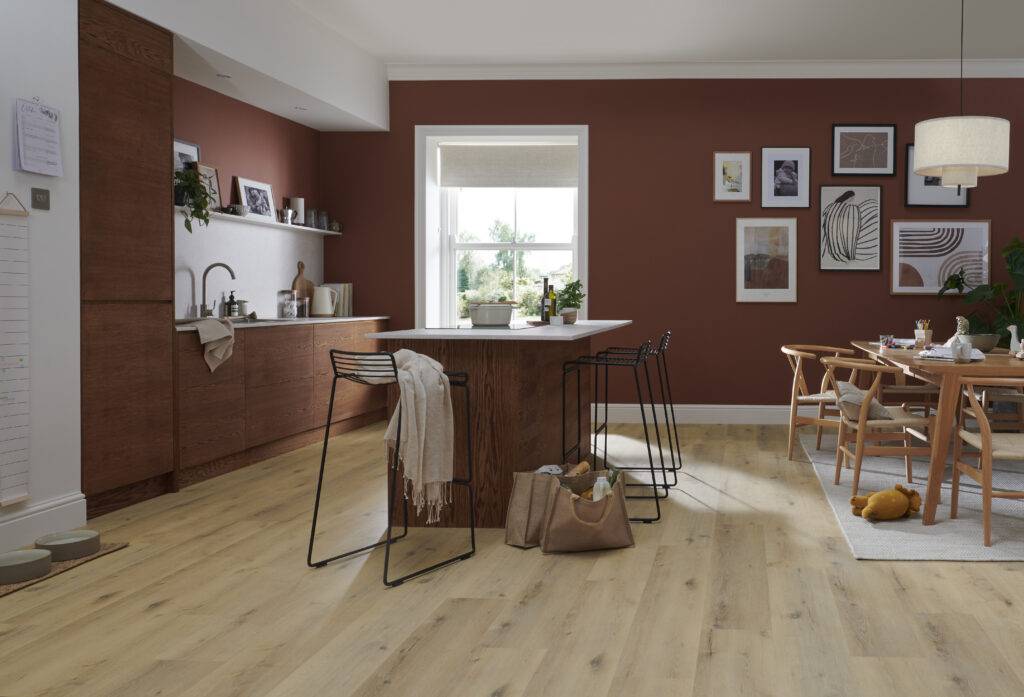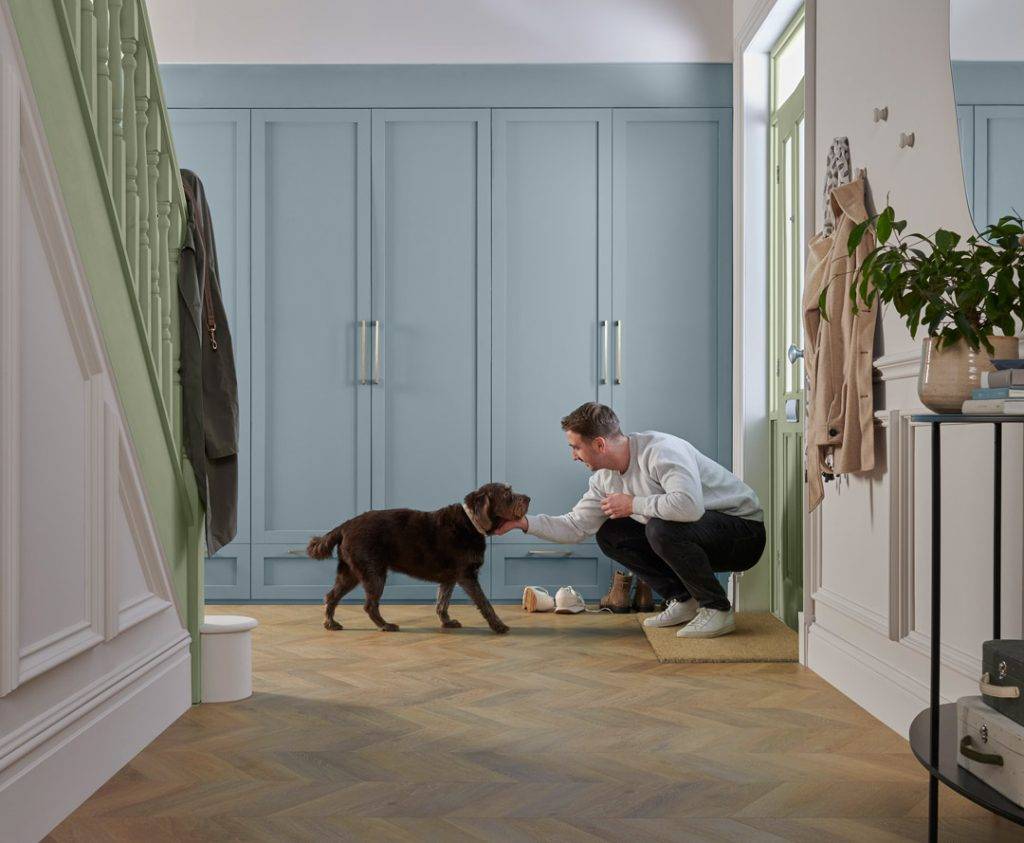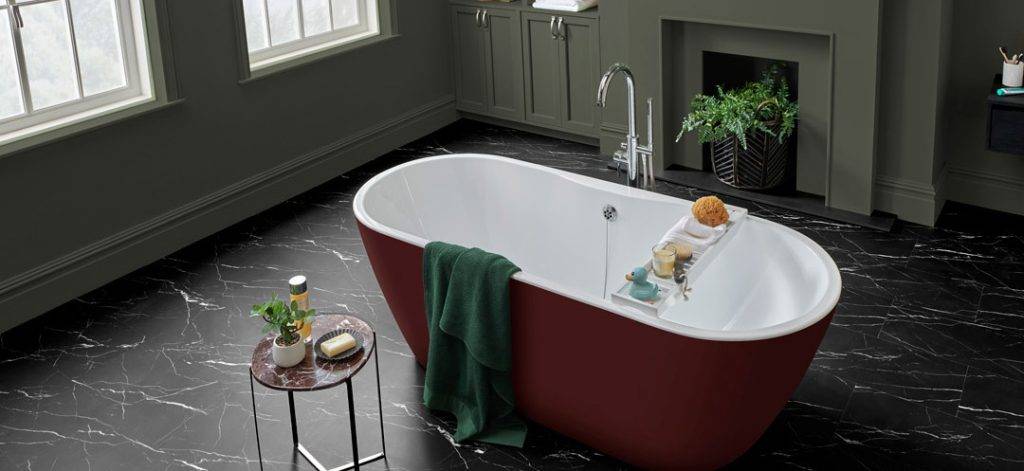Building homes from the floor up
Up to 3 FREE Samples
Luxury Vinyl Tiles are lauded as a great choice when it comes to types of flooring, for a whole host of reasons. A luxury vinyl floor is water resistant, has various levels of water resistance and scratch resistance (Luvanto’s is highly resistant to scratches and completely waterproof), and it is very easy to clean and take care of. However, one question we are often asked is do you need underlay for vinyl flooring?
Underlayment refers to the material being laid between the subfloor and the floor that is being fitted. It is placed to instil a range of benefits on the flooring that’s being laid above it. Some of those benefits are:
The very simple answer to the question of whether or not you require underlay with luxury vinyl tile flooring is NO; you typically don’t require an underlay. That being said, it’s worthwhile to install an underlayment if the LVT suggests you can use one, for example, for additional insulation or soundproof properties.
In the following section, we will be going over where luxury vinyl flooring underlay can be applied, and where it doesn’t need to be used.
The main thing to understand about where underlayment can be applied is what type of core your LVT has. To keep things simple, LVT underlay entirely depends on the type of core you have and will correspond with the type of flooring you purchase.
The two types are:
It’s important to explain the two types so you understand why there’s a difference between the possibility of installing underlay for click vinyl flooring vs gluedown.
LVT Glue Down is named as such due to its installation method, which consists of applying adhesive to the subfloor and fitting the floor directly to it. This is considered a highly stable installation method, but a much harder product to install than Click.
The rules regarding underlay for click vinyl flooring are different for a couple of reasons. Click refers to the installation method of combining the clickable joints of the floor to create a “floating floor”. Floating floors are not at all unique to LVT, but they follow the same rule – that it’s best to install an underlayment if required.
Considering the floor isn’t fixed to the sub-floor, it’s easy for an uncertified installer to poorly install the flooring. Poor or no subfloor preparation will lead to imperfections in the surface, which will reduce both the visual appeal, feel and longevity of the floor. Also, whilst walking on floating floors, you can usually feel the hollowness of the space between it and the subfloor. This can be lessened by your LVT click either having an underlay or being a rigid core product. However, it is essential to have a smooth, stable and flat surface (within recognised tolerances) to lay your floor onto. If your click flooring already has a built-in underlay, you must not lay another underneath as the flooring will become too cushioned and unstable causing damage to the joints over time.
Let’s take a closer look at the benefits of luxury vinyl floor underlay in more detail.
Underlayment can be made from cork to high-density polypropylene foam that has noise-absorbing qualities much like carpet underlay. It reduces the noise made against the floor by around 17-24 decibels, which is comparable to the amount of sound made by whispering to the quiet hum of a refrigerator.
That may not sound like much, but consider this: 60 decibels is the sound of a normal conversation between two people. With this sound-absorbing base layer for vinyl flooring, up to 40 decibels are blocked, making said conversation almost inaudible.
Considering walls also factor into soundproofing and reduce decibels by 30-40, then overall, 50-60 decibels will be trapped in a room from all angles except the door, which will suffer a 20 decibels loss. Nonetheless, this is a great quality to have in a home improvement decision.
For both installation methods, an underlayment will increase the amount of comfort your floor is capable of especially in areas with high foot traffic. Gluedown floors are tied directly to the subfloor. Although LVT itself is comfortable, warm and firm.
As far as LVT Click goes, not having an underlayment, built-in or otherwise, will result in a hollow harder sound when you walk on the floating floor. This may be disconcerting to some, as it may prompt you to question how solid your floor truly is. Having doubts like this can cause a reduced feeling of comfort in your own home, which is a feeling that is never welcomed.
With your luxury vinyl flooring underlay intact, the correct floor preparation prior to installation should provide a secure feeling to the floor. Overall, the installation and comfort will make your family feel secure, your visitors jealous, and your feet thankful.
Installing LVT includes preparing the subfloor, and an important part of that process is to test the surface regularity of the subfloor to make sure it is below 75% relative humidity. For any subfloor showing a moisture value above these limits, then a suitable damp-proof membrane/moisture suppression system must be used. This will help to ensure that whichever LVT flooring you use, the subfloor prep is done right and will help maintain the longevity of the flooring.
The subfloor has to be cleaned thoroughly and any debris removed before putting down the Click LVT flooring. If this is not properly done, there can be audible popping or the feeling of unevenness beneath the floor. Your vinyl flooring underlay can reduce some issues surrounding this problem, as minor imperfections could be levelled out by the underlay, but not your vinyl flooring. Even a small amount of grit caught under an LVT floor can cause problems in fitting and joint stability.
There are not a lot of grounds for failure when it comes to LVT if installed correctly. If you find yourself asking “do I need underlay for vinyl flooring”, remember that the biggest factor in whether or not you need one is whether your flooring already has a built in underlay or not, or whether you need additional sound-proofing. If you want more information regarding the fitting of LVT, contact Luvanto directly for advice.
Luvanto offer both options within its catalogue of products:
Regardless, if you’re not sure, you should ask. Always refer to the manufacturer’s recommendations. If there is no underlayment, there’s next to no reason not to use it with Click flooring, unless it is not suitable for the LVT flooring option you choose. Its benefits are too good to ignore.
Recently Viewed
Related Articles
Looking for a Home Refresh? How to Design a Room Around Your LVT Flooring
From Ordering a Sample to Installation: Your Complete Guide to Choosing LVT the Luvanto Way
The Luvanto Difference: What Makes Our LVT Flooring Stand Out
The Ultimate LVT for Kitchens: Why Black Marble & Oyster Marble are the Perfect Choice
LVT vs. Real Wood/Stone: A Practical Comparison Featuring Our New Products
POPAI Awards 2025
Clay Earth
Midnight Olive
Coastal Cottage




Trends come and go but a Luvanto floor is forever.
Keep your interiors looking show-home worthy with our colour and trend inspiration. As experts in colour forecasting and pairings, we match the latest trends and colours with each of our flooring shades so you can stay tickled pink with your décor all year round.
Flooring
Inspiration
Where To Buy
Help And Support
Copyright © 2025 Luvanto - QA Flooring Solutions Ltd. All Rights Reserved.
QA Flooring Solutions Ltd is a company registered in England
Registered Office: Unit 2 Hurricane Drive, Speke, Liverpool, L24 8RL
Company Registration Number: 07870268 | VAT Number: 852026449
| Cookie | Duration | Description |
|---|---|---|
| cookielawinfo-checkbox-analytics | 11 months | This cookie is set by GDPR Cookie Consent plugin. The cookie is used to store the user consent for the cookies in the category "Analytics". |
| cookielawinfo-checkbox-functional | 11 months | The cookie is set by GDPR cookie consent to record the user consent for the cookies in the category "Functional". |
| cookielawinfo-checkbox-necessary | 11 months | This cookie is set by GDPR Cookie Consent plugin. The cookies is used to store the user consent for the cookies in the category "Necessary". |
| cookielawinfo-checkbox-others | 11 months | This cookie is set by GDPR Cookie Consent plugin. The cookie is used to store the user consent for the cookies in the category "Other. |
| cookielawinfo-checkbox-performance | 11 months | This cookie is set by GDPR Cookie Consent plugin. The cookie is used to store the user consent for the cookies in the category "Performance". |
| viewed_cookie_policy | 11 months | The cookie is set by the GDPR Cookie Consent plugin and is used to store whether or not user has consented to the use of cookies. It does not store any personal data. |
Building homes from the floor up
Up to 3 FREE Samples